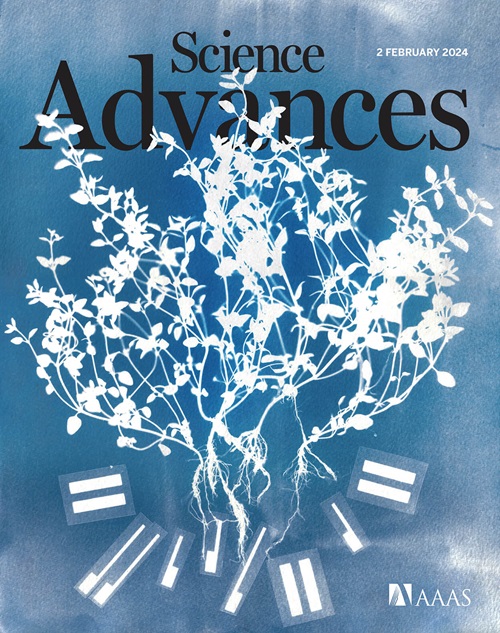Inland water greenhouse gas emissions offset the terrestrial carbon sink in the northern cryosphere
IF 12.5
1区 综合性期刊
Q1 MULTIDISCIPLINARY SCIENCES
引用次数: 0
Abstract
Climate-sensitive northern cryosphere inland waters emit greenhouse gases (GHGs) into the atmosphere, yet their total emissions remain poorly constrained. We present a data-driven synthesis of GHG emissions from northern cryosphere inland waters considering water body types, cryosphere zones, and seasonality. We find that annual GHG emissions are dominated by carbon dioxide ( teragrams of CO2; ) and methane ( teragrams of CH4), while the nitrous oxide emission ( gigagrams of N2O) is minor. The annual CO2–equivalent (CO2e) GHG emissions from northern cryosphere inland waters total or petagrams of CO2e using the 100- or 20-year global warming potentials, respectively. Rivers emit 64% more CO2e GHGs than lakes, despite having only one-fifth of their surface area. The continuous permafrost zone contributed half of the inland water GHG emissions. Annual CO2e emissions from northern cryosphere inland waters exceed the region’s terrestrial net ecosystem exchange, highlighting the important role of inland waters in the cryospheric land-aquatic continuum under a warming climate.

内陆水域温室气体排放抵消了北部冰冻圈的陆地碳汇
对气候敏感的北部冰冻圈内陆水域会向大气排放温室气体(GHGs),但其总排放量仍然难以确定。考虑到水体类型、冰冻圈区域和季节性,我们对北方冰冻圈内陆水域的温室气体排放量进行了数据驱动的综合分析。我们发现,每年的温室气体排放量主要是二氧化碳(1149.2 1004.8 1307.5 兆兆克 CO 2;中位数 Q 1 Q 3)和甲烷(14.2 10.1 18.5 兆兆克 CH 4),而氧化亚氮排放量(5.4 - 1.4 12.2 千兆克 N 2 O)较少。采用 100 年或 20 年全球升温潜能值计算,北部冰冻圈内陆水域每年的二氧化碳当量(CO 2 e)温室气体排放总量分别为 1.5 1.3 1.8 或 2.3 1.8 2.8 千兆克 CO 2 e。河流排放的 CO 2 e 温室气体比湖泊多 64%,尽管其表面积仅为湖泊的五分之一。连续的永久冻土带占内陆水域温室气体排放量的一半。北部冰冻圈内陆水域的二氧化碳年排放量超过了该地区的陆地净生态系统交换量,突出表明了在气候变暖的情况下内陆水域在冰冻圈陆地-水生连续体中的重要作用。
本文章由计算机程序翻译,如有差异,请以英文原文为准。
求助全文
约1分钟内获得全文
求助全文
来源期刊

Science Advances
综合性期刊-综合性期刊
CiteScore
21.40
自引率
1.50%
发文量
1937
审稿时长
29 weeks
期刊介绍:
Science Advances, an open-access journal by AAAS, publishes impactful research in diverse scientific areas. It aims for fair, fast, and expert peer review, providing freely accessible research to readers. Led by distinguished scientists, the journal supports AAAS's mission by extending Science magazine's capacity to identify and promote significant advances. Evolving digital publishing technologies play a crucial role in advancing AAAS's global mission for science communication and benefitting humankind.
 求助内容:
求助内容: 应助结果提醒方式:
应助结果提醒方式:


